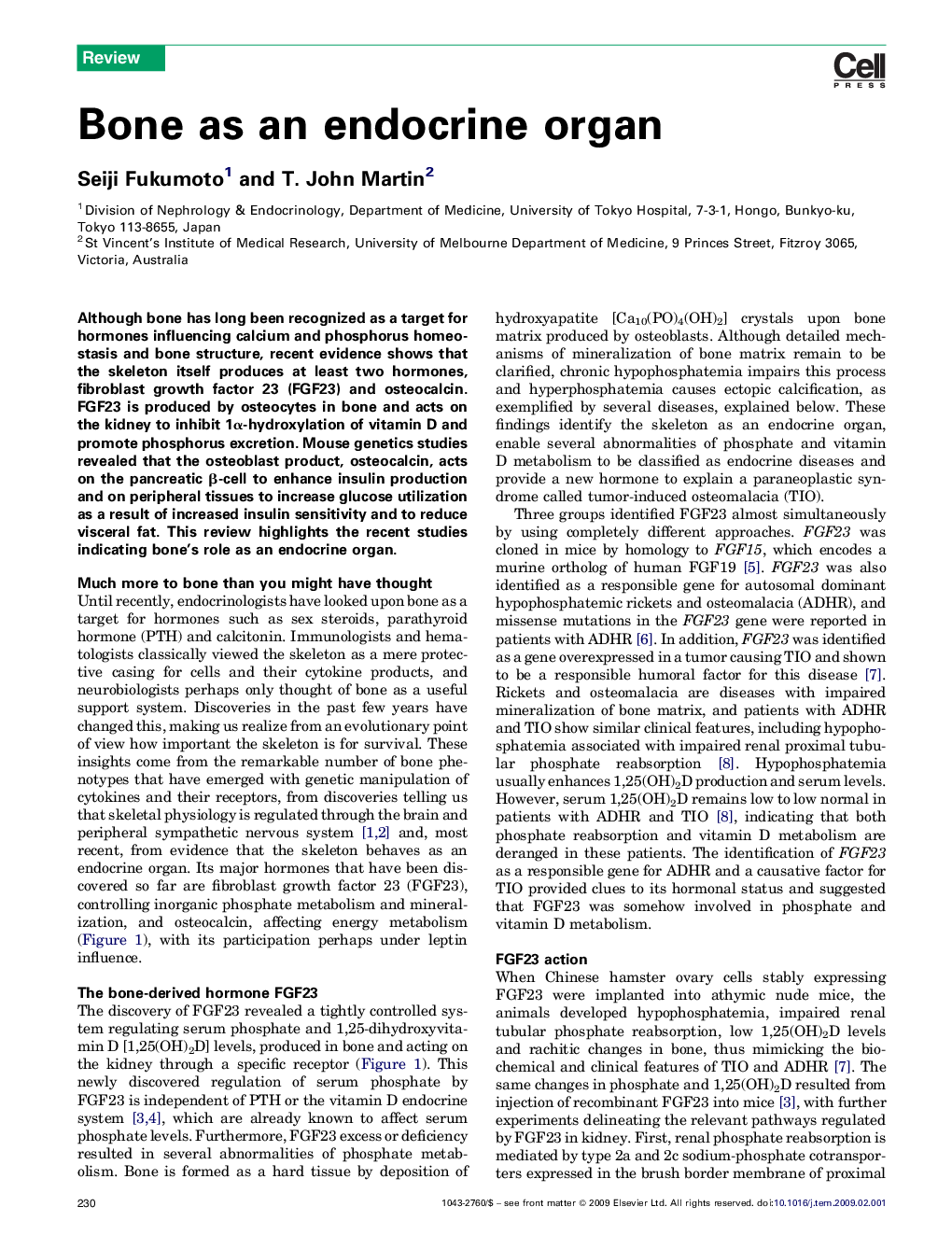| Article ID | Journal | Published Year | Pages | File Type |
|---|---|---|---|---|
| 2810720 | Trends in Endocrinology & Metabolism | 2009 | 7 Pages |
Although bone has long been recognized as a target for hormones influencing calcium and phosphorus homeostasis and bone structure, recent evidence shows that the skeleton itself produces at least two hormones, fibroblast growth factor 23 (FGF23) and osteocalcin. FGF23 is produced by osteocytes in bone and acts on the kidney to inhibit 1α-hydroxylation of vitamin D and promote phosphorus excretion. Mouse genetics studies revealed that the osteoblast product, osteocalcin, acts on the pancreatic β-cell to enhance insulin production and on peripheral tissues to increase glucose utilization as a result of increased insulin sensitivity and to reduce visceral fat. This review highlights the recent studies indicating bone's role as an endocrine organ.
